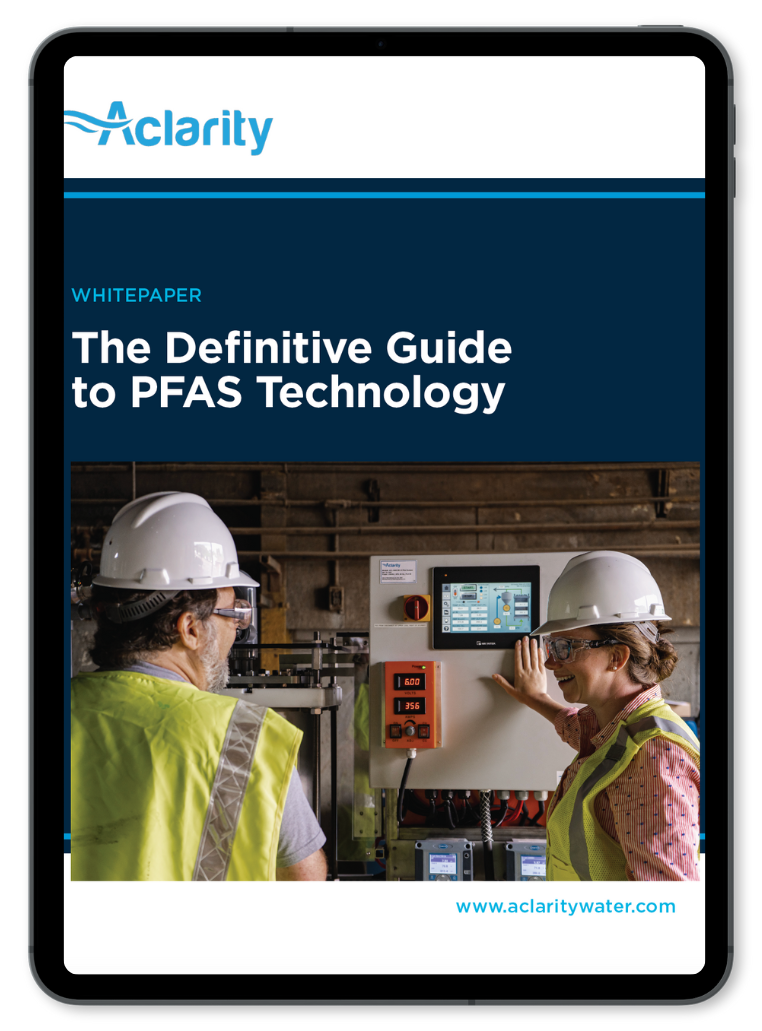Choosing the Right PFAS Technology: Critical Business KPIs
When choosing PFAS technologies, it is important to outline what is most important to your business and your landfill operations. When building out key performance indicators (KPIs) driving your organization, a self-assessment is a great way to determine which factors are priorities. Here are some initial questions to ask when evaluating new PFAS technology for implementation:
- What issues are causing your organization to make a change? Costs? Labor? Regulatory? Insurance risks? Sustainability initiatives?
- Is this a new installation or replacement? What sort of infrastructure will be required?
- Can existing systems be utilized or retrofitted?
- What are your PFAS concerns? Do you know the extent of the contamination? What are the current levels and what level is acceptable, if any? Is this based on municipal or federal permit levels?
- Does your process require a PFAS technology with a continuous process/flow vs a batch process?
If your operation is tested and high levels of PFAS are found, you need to know the options available to you to effectively deal with it. Here are some additional questions to consider:
- Is destruction the goal? Or are removal and disposal methods sufficient? Why?
- Would a technology that destroys PFAS allow increased revenues by allowing your organization to receive higher volumes or higher levels of contamination in intake waste streams?
- Is this a capital expenditure or an operational one?
If your goals mandate maximum PFAS removal or destruction, these high-level strategic decisions will help you determine which technology to implement. Conversely, if you are trying to meet state regulations, make sure to do your research and check your specific state for further instructions.

The Definitive Guide to PFAS Technology Whitepaper
Comprehensive guide to understanding PFAS management strategies to reduce risk and safeguard environmental and public health.
Stay current on advantages and disadvantages of technologies available for PFAS:
- Removal
- Disposal
- Destruction
Regulatory Considerations
As the EPA continues to keep a close watch on the growing PFAS issue, they will likely mandate strict reporting to reduce pollution. Therefore, the time is now to become well-versed in dealing with this thorny issue and to be prepared to have tracking and reporting systems in place rather than scrambling later and potentially submitting erroneous or inaccurate PFAS data. Your PFAS technology provider should also be able to assist and make recommendations on a sensing, testing or reporting system.
DOWNLOAD NOW: The Definitive Guide to PFAS Technology Whitepaper
Future Considerations
Depending on the location of your landfill site or centralized waste treatment facility, there are many elements to consider when proactively planning to mitigate PFAS.
Increasing state and federal regulations could result in extensive risk, unforeseen costs, damaged reputation, and other detrimental implications. What’s more, with the EPA set to designate two types of PFAS—perfluorooctanoic acid (PFOA) and perfluorooctanesulfonic acid (PFOS)—as hazardous substances potentially in Summer 2023, landfills, wastewater treatment plants, and incinerators may not be able to accept PFAS streams. As a result, there will be fewer and fewer PFAS disposal options available, and disposal costs will likely skyrocket. So if you are planning to use granular activated carbon (GAC), for example, to capture PFAS, you will need to dispose of the GAC vessels as hazardous waste. Costs for separating and disposing of PFAS are anticipated to triple in the coming months, so we recommend getting on the right side of this and investing in a destruction solution now rather than putting this decision on the back burner.
In other words, we are talking about the opportunity cost of “doing nothing” and hoping that your PFAS issue vanishes. This type of reactive thinking goes against all the progress your endeavor has made, and we’re here to give your practical tips to take control of and destroy your PFAS problem—forever.
A starting point is to determine your business uptime and when and how often a PFAS system needs to be running.
- Do your needs seasonally or even monthly?
- Will the system be running 24/7, 365?
- Or Monday through Friday 9-5?
- Will you have a larger concentration of PFAS to deal with at certain times of the year?
All of these considerations are part of the important decision when evaluating PFAS technologies. For more information on currently available PFAS technologies, review our blog or download the whitepaper below.

WHITEPAPER
Download The Definitive Guide to PFAS Technology whitepaper and delve into current PFAS removal technologies. In this whitepaper, analyze the pros and cons of a variety of PFAS technologies and discover practical exercises for organizations to identify and implement suitable solutions. In this comprehensive document, walk away with an understanding of PFAS management, facilitating informed decision-making to reduce PFAS risk and protect environmental and public health.
